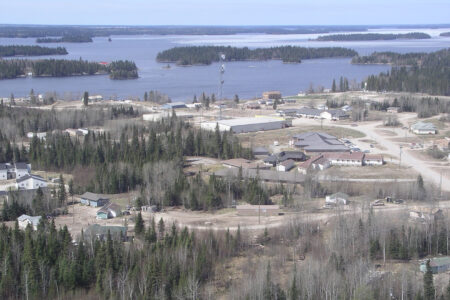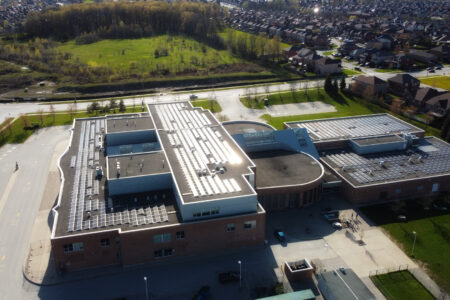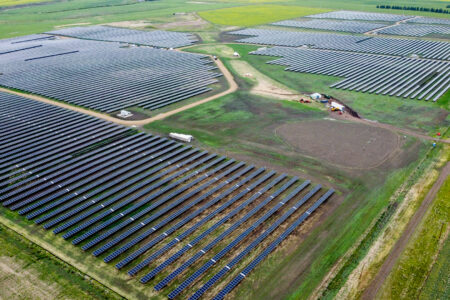
This spring I changed jobs. I shifted from advocating for renewable energy to promoting nuclear energy — to many, a surprising twist in my career path. But for me, it was a logical outcome of the realization that the climate emergency requires us all to pick up the pace of transformation.
Solar technology is clean, it empowers people and businesses, and it’s scalable. I remain a big proponent of both wind and solar.
But I and others are becoming increasingly aware that wind and solar aren’t enough to respond to the climate emergency. Twenty years ago, 36 percent of the world’s electric power was clean, coming from sources that don’t emit greenhouse gases (nuclear plus renewables, including hydro). Twenty years and $3 trillion in investment later, the non-GHG-emitting share of world electricity is still at 36 percent. Seeing these unchanging numbers has been a shock. Despite the impressive growth of wind and solar, we’re not moving the needle on decarbonizing global electricity systems.
I’m convinced that two factors stop renewables from cleaning up the world’s energy system. One is that electricity demand keeps growing quickly, and that need has to be met somehow. Too often, coal and gas are the only sources that can finish filling that gap.
The other is that wind and solar are intermittent, and fossil fuels are being used to back them up. It’s clear that if renewables are going to transform the climate picture, they will have to partner with something more sustainable.
The International Energy Agency has just studied this problem, and it’s absolutely clear in its report that two changes are needed. First, we have to stop closing nuclear plants prematurely. These closures, driven by politics or by the availability of cheap natural gas, take huge chunks of clean power out of the system, further increasing the demand gap that gets at least partly filled by fossil fuels. Second, we have to stop backing up wind and solar with fossil fuels.
What else can partner with renewables? Well, there’s very little time — 10 or 20 years, at best — to get this done. So it has to be a proven, or at least modelled and tested, technology that we can start building today.
What technology has already decarbonized entire large economies, like France and Sweden and Ontario? Nuclear energy has. And while existing nuclear plants have shown they can pair with variable wind and solar to some extent, the new, small reactors will be even more flexible, and they’ll be more distributed in location, too.
Today about 81 percent of Canada’s electricity comes from clean sources such as nuclear, hydro, wind and solar. However, four provinces still have high concentrations of fossil fuels. The challenge is to shift the country the rest of the way toward a clean grid.
In the absence of a plan to do this, as we push these provinces to get off coal, we’re pushing them toward gas — which only reduces the emissions by about half. Add in the growth of demand for power, and a switch to gas will hardly make a dent in emissions.
Any realistic way to respond to the climate emergency and move to zero emissions has to include nuclear energy. Once we face this reality, it becomes a question of how we bring nuclear into the mix. We might make progress with more stringent emissions rules that would slow the rush toward gas. But it would be better to have a plan for investing in a combined clean energy solution: renewables and small, distributed nuclear plants, integrated together. That’s the direction I want to go in with my role at the Canadian Nuclear Association.
The urgency of the climate challenge means we have to use proven technologies, or at least technologies that are well along in testing and commercialization. Hoping that brand-new, untested, unscaled technologies are the answer just risks deferring action until they are scaled up and proven and safe and commercialized. That might take decades and cannot be relied on. Focusing on new technology is highly uncertain and ignores the scale of worldwide infrastructure change that we should be doing right now. The only readily available technology that can complete our response to this emergency is nuclear.
Fortunately, the urgency is forcing decision-makers to revisit their attitudes to nuclear. They’re seeing that current solution paths aren’t working. Those arguing for 100 per cent renewables — and I was one of them — are starting to admit this. And when, as a solar energy advocate, I started to look again at nuclear, I realized how much misinformation is out there. If you look at its full record and its full life cycle, nuclear is safe, reliable and clean.
Individual actions — veganism, electric cars, not flying — have the same challenges as renewables: they’re valuable, they deserve credit, but what if they can’t turn the tide? Household decisions can go some distance, but it’s policy steps — like all the anti-pollution measures taken in the 1970s and ’80s — that will be transformative.
The value of declaring an emergency is that the public might decide to give governments the space and the permission to make really hard policy decisions, and take action. That’s how we have to respond now.
Photo: Shutterstock/By Vaclav Volrab
Do you have something to say about the article you just read? Be part of the Policy Options discussion, and send in your own submission. Here is a link on how to do it. | Souhaitez-vous réagir à cet article ? Joignez-vous aux débats d’Options politiques et soumettez-nous votre texte en suivant ces directives.







